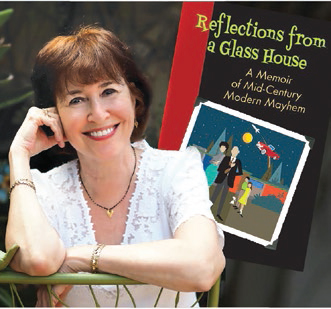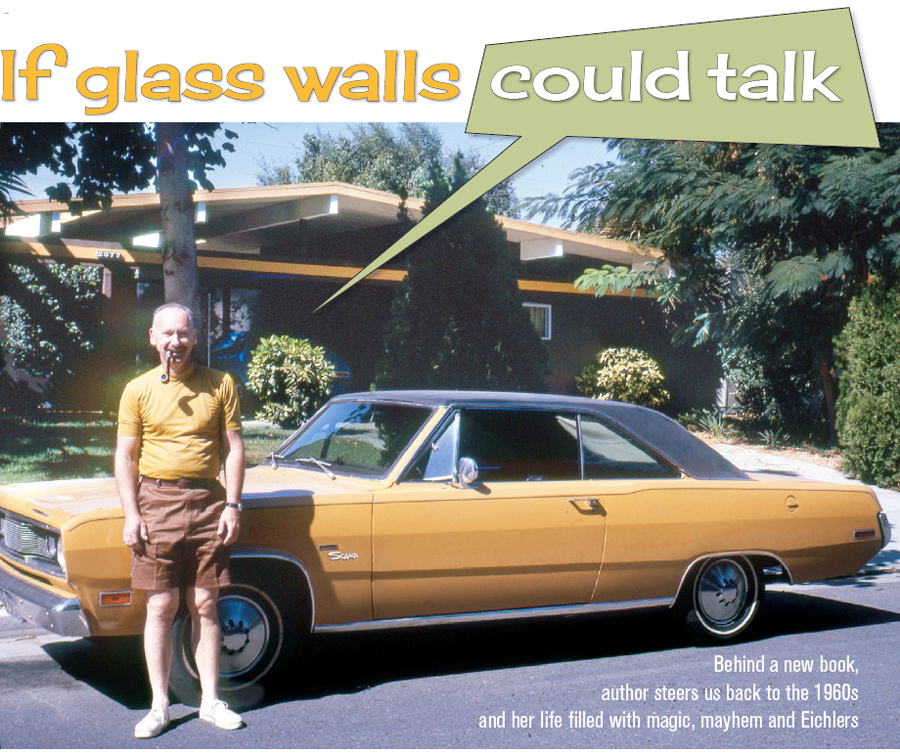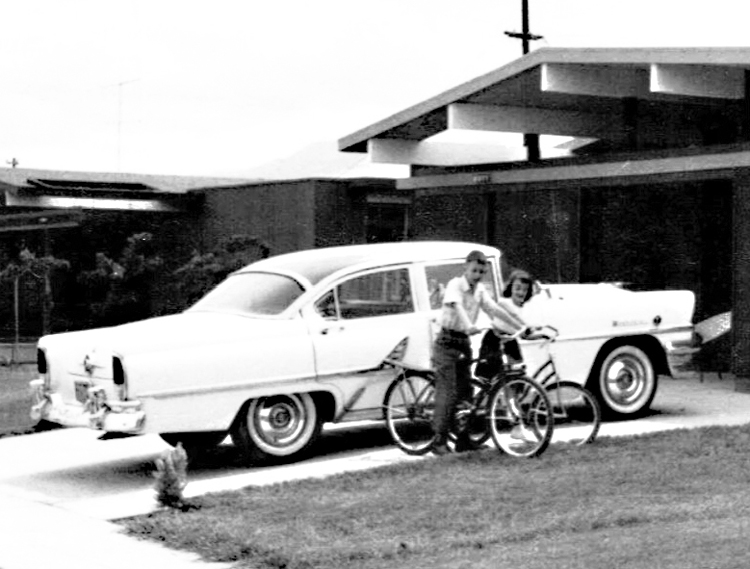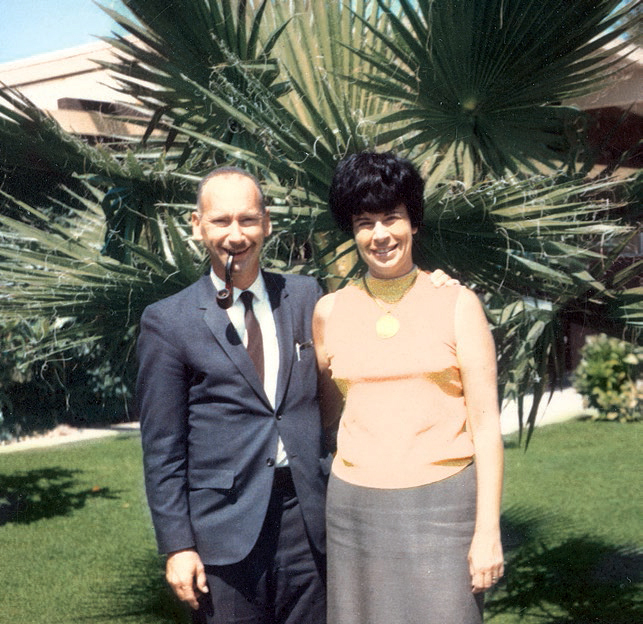If Glass Walls Could Talk
 |
New Book Tells All
Guest contributor Carol Sveilich (pictured above), MA, is the author of the new book, Reflections from a Glass House: A Memoir of Mid-Century Modern Mayhem. 'Reflections' focuses on coming of age in the 1960s and early 1970s at the Sveilich family's Eichler home in San Jose's Fairglen, the unique neighborhood that birthed the Fairglen Art Festival and was recently placed on the National Register of Historic Places. Carol's writing below is representative of the musings found in her sizable book of nearly 400 pages, available in softcover and Kindle at booksellers everywhere.
 |
|
|
Never underestimate the power of a long-distance phone call.
We were living on Long Island in the late 1950s, when my mother's best friend, Joyce, who had relocated to the Bay Area, called to urge my parents to fly out and view some new and impressive homes constructed of glass, with moon-shaped lighting fixtures and mahogany walls.
"These futuristic structures have a donut hole in the center of the house called an atrium and a brightly painted front door," she would say with excitement in her voice.
My parents, Joe and Blossom Sveilich, were both stunned and intrigued.
If it weren't for Joyce and her husband, Chuck, we never would have found our mid-century modern glass castle in the Fairglen neighborhood of Willow Glen in 1960. Joyce was our own personal 'Eichler whisperer.'
Joyce would often call Mom, gushing on about the glories of California, and prodding my parents to get away from the East Coast snow and cold and take a leap of faith westward.
 |
|
|
"Tell Joe to find a job out here, then move [and be close to me] near Palo Alto. It's paradise," Joyce hollered into the mouthpiece. "Get out of New York and join us in Shangri-La!"
My mother nudged my father to look for a job in Santa Clara Valley. It was probably more like a shove. He flew out for an interview and was immediately hired as a draftsman designing food-processing machinery.
But where would we live?
"[Builder] Joe Eichler just built a subdivision in San Jose," Joyce suggested. "It's in a community called Willow Glen. Check them out. The houses are small, but affordable."
My father, with his usual bravado, drove to the Eichler sales office there, saw an artist's rough rendering of our future Eichler home, and with a leap of faith and a new job in his pocket, purchased it on the GI bill. No walk-through necessary. Just a roll of the dice with our future.
Before we knew it, Dad was moving our family of four—that included me and brother Howard—to San Jose.
 |
In that summer of 1960, we found a Bay Area sky that was bursting wide open in a brilliant azure blue, a hue typically found on those 'greetings from paradise' postcards from Tahiti or Hawaii.
What could possibly go amiss in a place that seemed as lovely as Willow Glen, where living promised to be as exciting as a moon-landing, and streets had spectacularly pleasant names. I lived on Fairgrove Court, which was near Fairlawn Avenue, around the block from Fairglen Avenue and Fairorchard. You get the idea.
The new community promised what the Monkees once sang about: a 'Pleasant Valley Sunday' every day of the week, complete with the scent of fresh-cut grass and the waves from welcoming neighbors.




